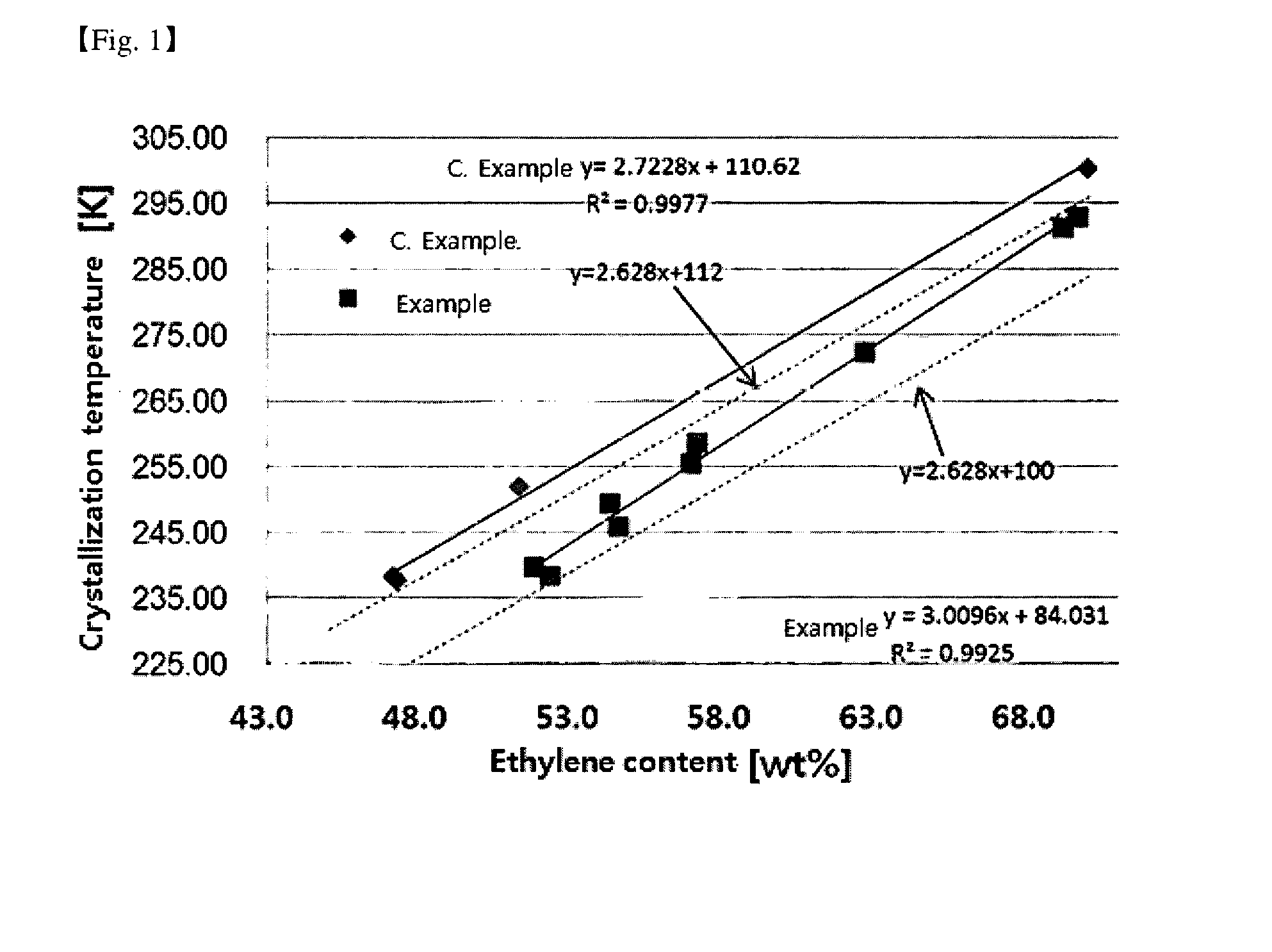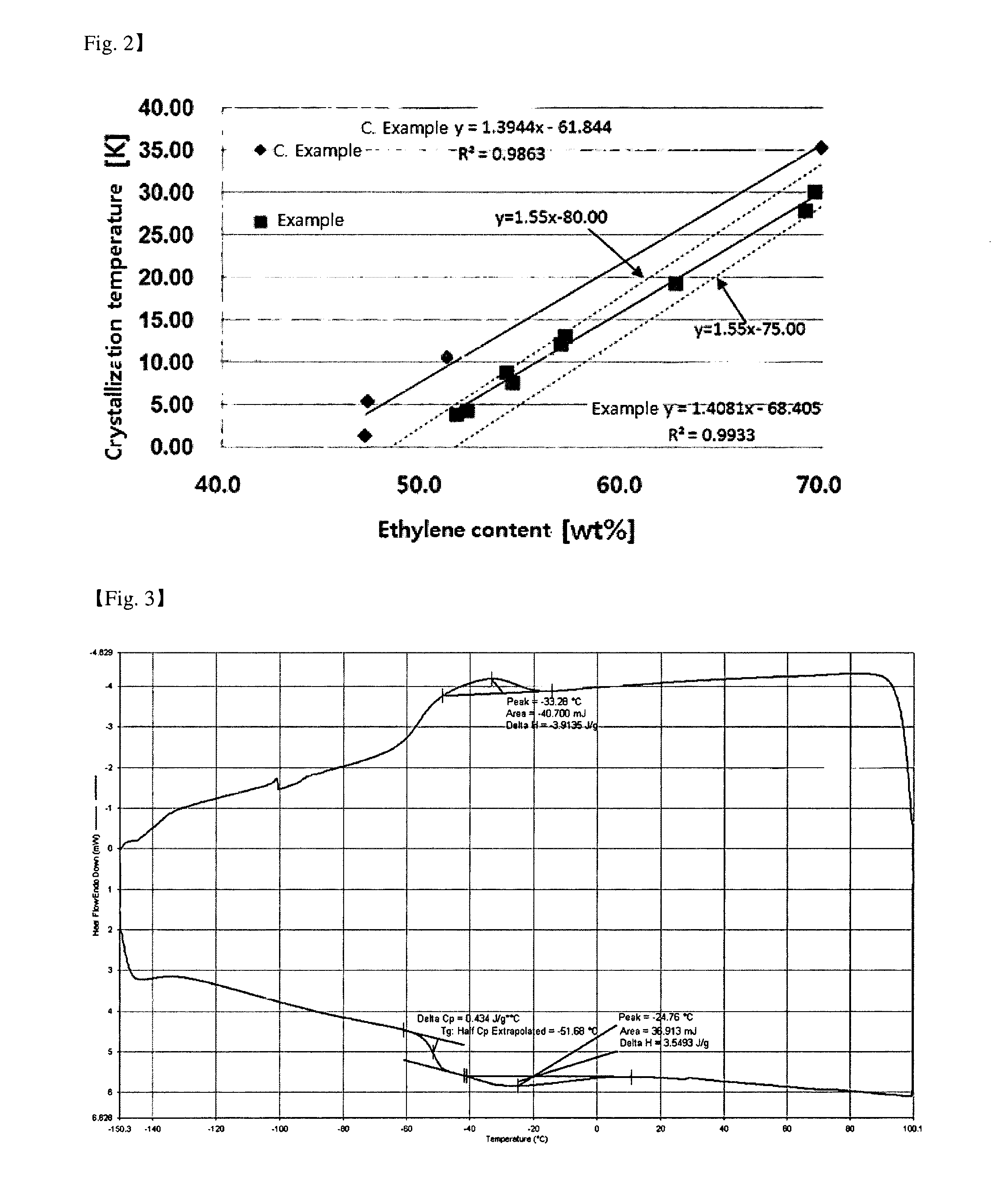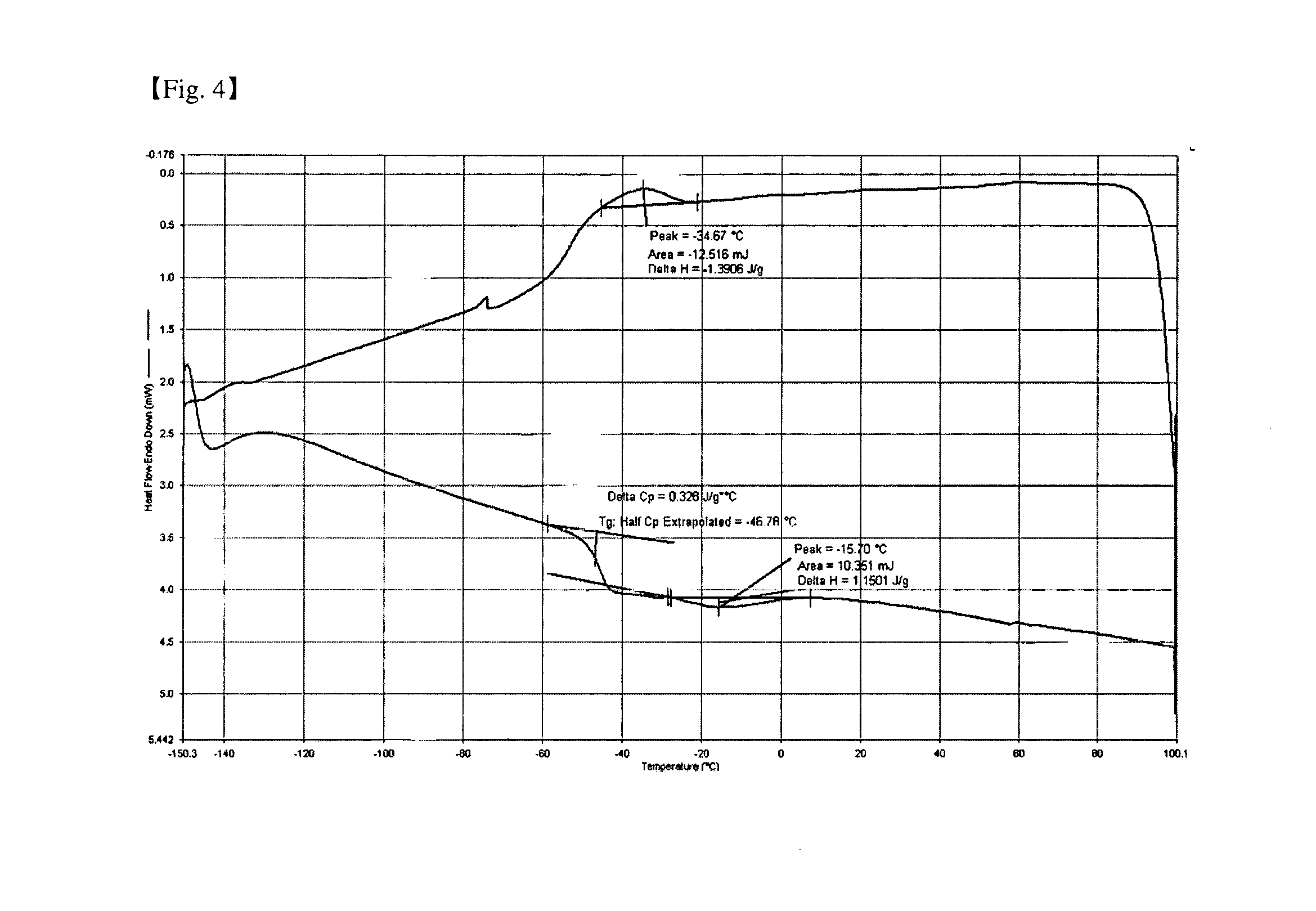Trinary elastic copolymer comprising diene and method for preparing same
- Summary
- Abstract
- Description
- Claims
- Application Information
AI Technical Summary
Benefits of technology
Problems solved by technology
Method used
Image
Examples
examples 1 to 9
Preparation of Elastic Terpolymer of Ethylene, Propylene, and 5-ethylidene-2-norbornene
[0092]Terpolymerization of ethylene, propylene, and 5-ethylidene-2-norbornene was continuously performed using a 2 L-pressure reactor. Hexane as a polymerization solvent was continuously fed to the bottom of the reactor at a feed rate of 7.6 kg per hour, and the polymerization solution was continuously discharged from the top of the reactor.
[0093]As the first and second transition metal compounds, the above-described [(1,2,3,4-tetrahydroquinolin-8-yl)tetramethylcyclopentadienyl-eta5,kapa-N]titanium dimethyl and [(2-methylindolin 7 yl)tetramethylcyclopentadienyl-eta5,kapa-N]titanium dimethyl dissolved in hexane were used, and fed to the reactor at a rate of 51 to 54 μmol per hour. Further, as the co-catalytic compound, the above-described N,N-dimethylanilinium tetrakis(pentafluorophenyl)borate dissolved in toluene was used, and fed to the reactor at a rate of 255 to 270 μmol per hour. Further, as t...
experimental example 1
Measurement of Crystallization Temperature and Enthalpy, and Derivation of Relationship Between Ethylene Content and Crystallization Temperature or Crystallization Enthalpy
[0099]DSC curve data of the copolymers of the examples and comparative examples was obtained using a DSC instrument of PerkinElmer DSC 6000. More specifically, DSC analysis was performed while heating each copolymer sample from approximately 0° C. to approximately 100° C. at a rate of approximately 20° C. / min, maintaining it at approximately 100° C. for approximately 2 min, and then cooling it to approximately −150° C. at a rate of approximately −10° C. / min. The obtained DSC curve data of Example 2 and Comparative Example 1 are shown as in FIGS. 3 and 4.
[0100]Crystallization temperature (Tc; K) and crystallization enthalpy (ΔHc; J / g) of each copolymer were calculated from the DSC curve data, and are summarized in the following Table 2.
[0101](1) Data for each copolymer is presented by plotting the content of ethyle...
experimental example 2
Measurement of Re*Rc
[0103]Each copolymer of the examples and comparative examples was analyzed by 13C-NMR to obtain a growth reaction rate constant of k11, k12, k21, or k22. In this regard, a 600 MHz Bruker DRX 600 instrument was used for measurement, and each copolymer dissolved in ortho-dichlorobenzene-d4 solution was analyzed at 100° C.
[0104]Each growth reaction rate constant can be obtained from the results of 13C-NMR analysis by Triad Sequence analysis according to the Randall method [Journal of Polymer Science: Polymer Physics edition, 1973, 11, 275˜287] and the Kakugo method [Macromolecules 1982, 15, 1150]. Based on the equations of Re=k11 / k12 and Rc=k22 / k21, the Re*Rc value was calculated.
[0105]The Re*Rc value of each copolymer is also shown in the following Table 2.
TABLE 2Content ofCrystallizationCrystallizationethylenetemperatureenthalpywt %KJ / gRe * RcExample 151.7239.873.910.650Example 252.2238.404.360.803Example 354.2249.448.820.848Example 454.5245.897.650.563Example 556...
PUM
| Property | Measurement | Unit |
|---|---|---|
| Temperature | aaaaa | aaaaa |
| Temperature | aaaaa | aaaaa |
| Percent by mass | aaaaa | aaaaa |
Abstract
Description
Claims
Application Information
 Login to View More
Login to View More - R&D Engineer
- R&D Manager
- IP Professional
- Industry Leading Data Capabilities
- Powerful AI technology
- Patent DNA Extraction
Browse by: Latest US Patents, China's latest patents, Technical Efficacy Thesaurus, Application Domain, Technology Topic, Popular Technical Reports.
© 2024 PatSnap. All rights reserved.Legal|Privacy policy|Modern Slavery Act Transparency Statement|Sitemap|About US| Contact US: help@patsnap.com










